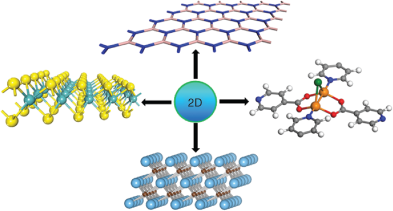
Inspired by the intensive studies of graphene, scientists have put extraordinary efforts in exploring properties and phenomena involving noncarbon graphene-like two-dimensional (2D) nanomaterials, particularly those only consisting of single layers or few layers. Experimentally, many graphene-like 2D structures have been fabricated from a large variety of layered and nonlayered materials. These graphene-like structures have already shown exceptional properties, which will offer new breakthroughs and innovative opportunities in nanomaterials science. Theoretically, density-functional theory (DFT) computations offer a powerful tool to investigate the electronic structure (principally the ground state) of nanomaterials, to predict their intrinsic properties, assist in characterization, and rationalization of experimental findings, as well as explore their potential applications. By DFT computations, many graphene-like materials have been explored and designed, and fantastic properties are disclosed. In this review, we present the recent computational progress in discovering the intrinsic structural, electronic, and magnetic properties of several important and representative graphene-like 2D nanomaterials, as well as identifying their potential applications. The highlighted graphene-like structures include layered van der Waals (vdW) materials (h-BN, MoS2, α-MoO3, and V2O5), graphitic-like ZnO, MXenes (metal carbides or carbonitrides), the not-yet-synthesized B2C, SiC2, BSi3, arsenene and antimonene, and single-layer coordination polymers ([Cu2Br(IN)2]n (IN = isonicotinato), Fe-phthalocyanine, and nickel bis(dithiolene)).
